M22, Globular Cluster
Click image for full size version
December 20, 2020
M22 might be the most famous northern globular cluster, if only it rose higher for people at mid-northern latitudes. M22 is beautifully set in the Milky Way in Sagittarius. It’s in the same league as M13 in terms of splashiness, even though it is dimmed by being so much lower in my sky (lower in the sky means more atmosphere in the light path, which dims and degrades the view). It’s among the nearest such objects to us, at around 10,600 light years, and it covers an area about the size of the full Moon. That makes it around 100 light years across. Many globulars are very old; this one’s age is pegged at around 12 billion years.
This image of M22 was captured in August 2016, during the week of the Starfest star party near Mount Forest, ON. We had a long string of clear nights and hot, sunny days. I visited my friends each day and came home each night to image from my observatory. One of the objects I imaged is M22, one of my favourite globular clusters, being set in the thick of the Milky Way.
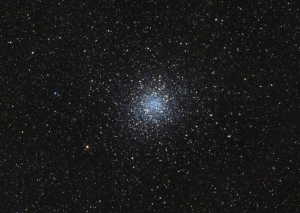 To see how my image processing has evolved over the last five years, have a look at the version at left, posted in 2016, and made from the same image data. I have learned so much these last five years, thanks in large part to devouring all the content at Warren Keller’s www.ip4ap.com, and then practicing. A lot.
To see how my image processing has evolved over the last five years, have a look at the version at left, posted in 2016, and made from the same image data. I have learned so much these last five years, thanks in large part to devouring all the content at Warren Keller’s www.ip4ap.com, and then practicing. A lot.
Tekkies:
SBIG STL-11000M camera, Baader R, G and B filters, 10″ f/6.8 ASA astrograph, Paramount MX. Guided with QHY5 guide camera and 80 mm f/6 Stellar-Vue refractor. Acquisition, guiding and mount control with TheSkyX. Focusing with FocusMax. Automation with CCDCommander. All preprocessing and post-processing in PixInsight. Shot from my SkyShed in Guelph, Ontario. Acquired August 1-3, 2016. No moonlight, good to excellent transparency, and good to very good seeing throughout acquisition.
Data Reduction and Initial Processing
Preprocessing: The WeightedBatchPreProcessing script was used to create integrated master files.
Gradient Removal: DBE was applied to each master using Subtraction.
Luminance Creation: The masters were integrated with ImageIntegration, using Average combination, weighted for noise with no pixel rejection.
Colour
Colour Balancing: Colour was balanced with PhotometricColorCalibration.
Linear Noise Reduction: MultiscaleLinearTransform was used to reduce noise in the background areas, using an internal mask to protect bright structures. Layer settings for threshold and strength: Layer 1: 5.0 0.85, 2 iterations; Layer 2: 3.5, 0.75, 2 iterations.
Stretching: HistogramTransformation was applied to make a pleasing, bright image, with background set to an intensity of approximately 0.10.
Luminance
Deconvolution: A star mask was made to use as a Local Deringing Support Image. A copy of the luminance image was stretched to use as a range mask. Deconvolution was applied to clone (80 iterations, regularized Richardson-Lucy, external PSF made using PSFImage script with about 30 stars). The deconvolved clone was blended into the original (25% clone) using a match to limit the blend to the brightest parts of the cluster.
Linear Noise Reduction: MultiscaleLinearTransform was used to reduce noise in the background areas, using an internal mask to protect bright stars. Layer settings for threshold and strength: Layer 1: 3.0 0.85, 1 iterations; Layer 2: 2.0, 0.75, 2 iterations.
Stretching: HistogramTransformation was applied to make a pleasing, bright image, with background set to an intensity of approximately 0.10.
Combining Lightness and Colour Images
LRGB Combination: The lightness image was applied to the RGB image using LRGBCombination with default settings.
Additional Processing
Nonlinear Noise Reduction: TGVDenoise was used in L*a*b* mode to reduce noise with a mask used to target the background areas and protect the stars (max. 1,000 iterations and convergence selected for both lightness and chrominance).
Final Steps: Background and star brightness, contrast, and colour saturation were adjusted in several iterations using CurvesTransformation with masks as required. ICCProfileTransformation (sRGB IEC61966-2.1; Relative Colorimetric with black point compensation) was applied prior to saving in jpg format.

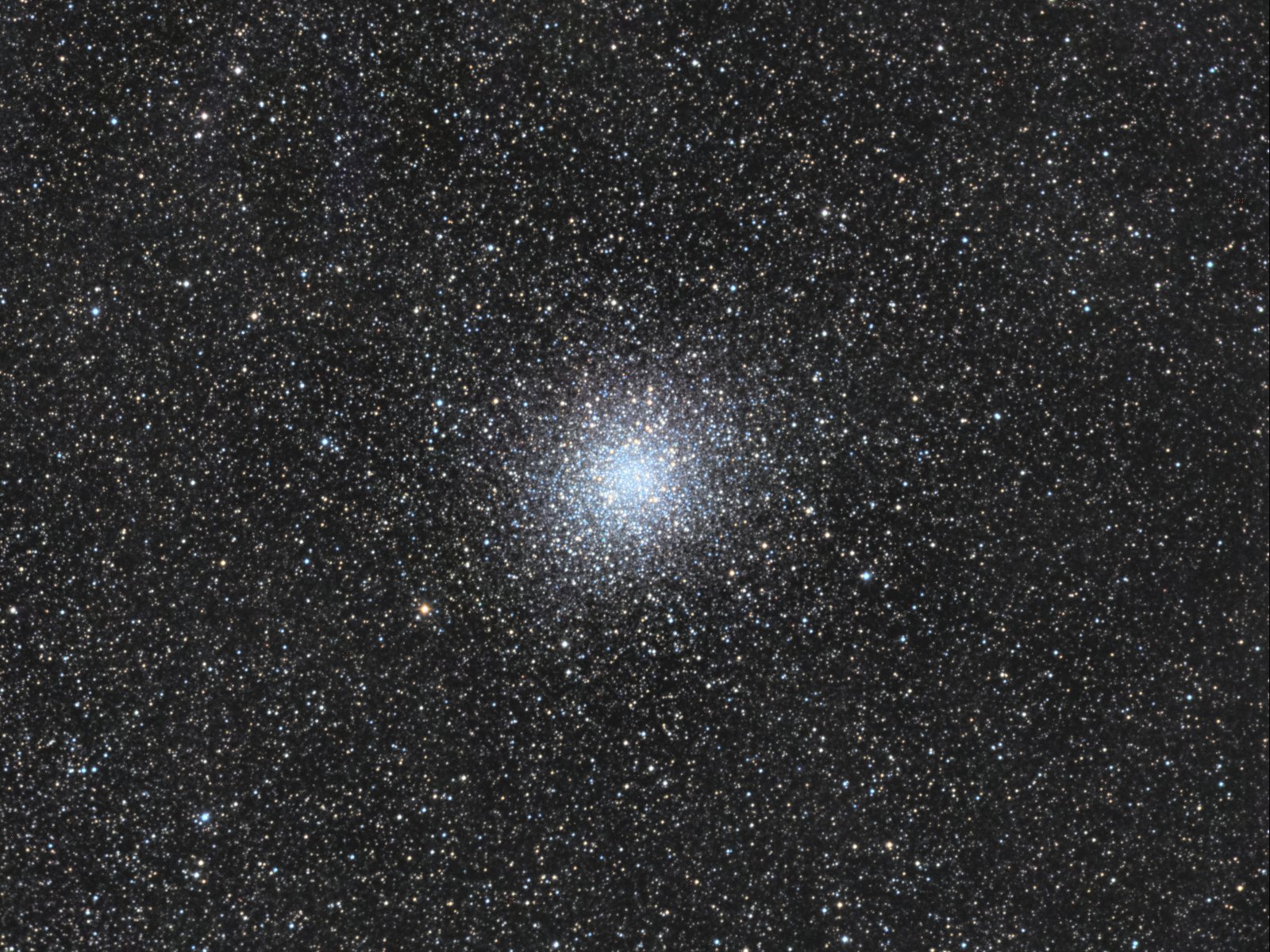

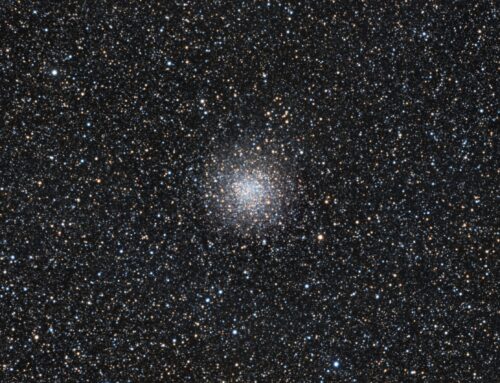
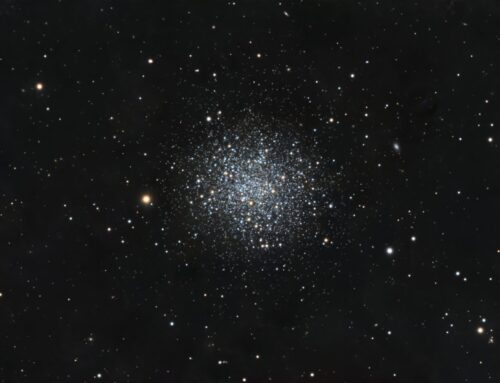
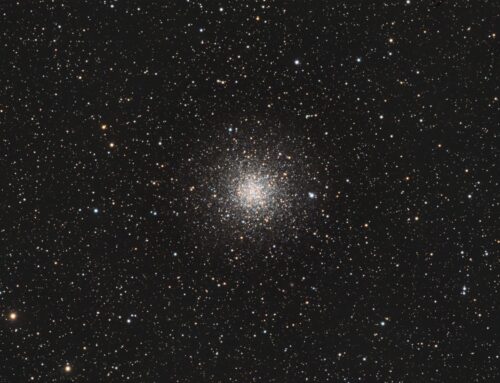
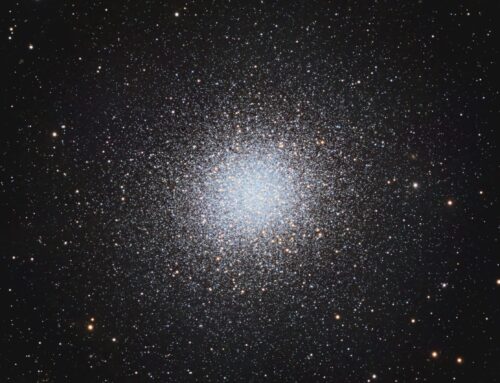
Very well defined and very good detail in the cluster core. Bravo Ron
Hey Ron…. I followed your synthetic luminance process on a DSLR image of 47 Tuc and it worked incredibly well! Thanks for documenting it here.
Fabulous! Great job and thank you for showing us your post processing workflow!!
GORGEOUS CLUSTER!
That’s an awesome image. I love t color and clarity.